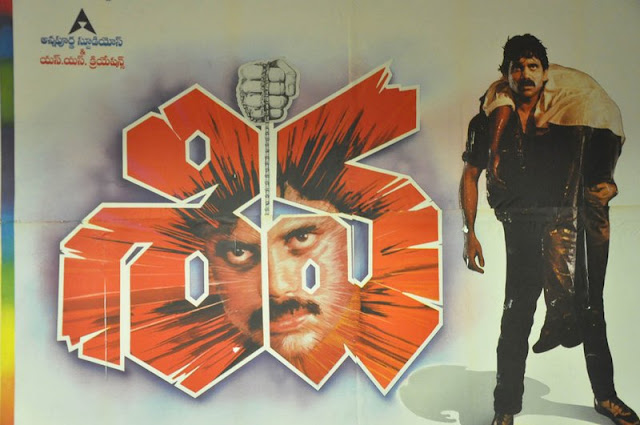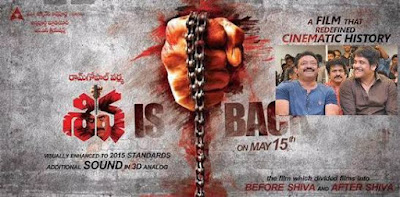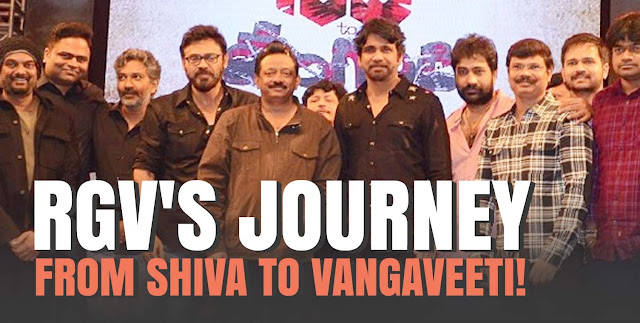⏩➤ "Shiva" is Known As A Path Breaking Movie In Telugu Cinema.
⏩➤ It Was Also Defined As "Before Siva And After Siva" In Tollywood
| ⏩➤ CAST AND CREW : |
|---|
|
||||||||||||||||||||||||||||||||||||||||||||||||||||||||||||||||||||||||||||||||||||||||||||||||
|---|---|---|---|---|---|---|---|---|---|---|---|---|---|---|---|---|---|---|---|---|---|---|---|---|---|---|---|---|---|---|---|---|---|---|---|---|---|---|---|---|---|---|---|---|---|---|---|---|---|---|---|---|---|---|---|---|---|---|---|---|---|---|---|---|---|---|---|---|---|---|---|---|---|---|---|---|---|---|---|---|---|---|---|---|---|---|---|---|---|---|---|---|---|---|---|---|
| ⏩➤ TECHNICAL TEAM : ➢Production : Annapurna Studios ➢Written By : RGV Darma Teja Tanikella Bharani (Dialogues) ➢Music By : Ilaiyaraaja ➢Cinematography : S Gopala Reddy,Rasool ➢Edited By : Sattibabu  ⏩➤Development : ⏩➤Development :👍After he graduated with a degree in civil engineering from Siddhartha Engineering College in Vijayawada, Ram Gopal Varma opened a video-rental shop in Ameerpet. Noting his son's interest in films, Penmatsa Krishnamraju (a former sound recordist for Annapurna Studios) helped Varma join the teams of Collector Gari Abbai (1987) and Rao Gari Illu (1988) as an assistant director. Varma befriended actor Akkineni Nagarjuna, and filmmakers Akkineni Venkat and Yarlagadda Surendra. He presented his script for Raathri to them. When Nagarjuna rejected it, Varma presented another script based on his life as a student in Vijayawada. 👍He earlier narrated this script to filmmaker Kovelamudi Raghavendra Rao who suggested few changes because of its serious tone. Varma watched Rao's Kaliyuga Pandavulu (1986) and backed out after understanding Rao's point of view. When Rao Gari Illu was nearly completed, Varma asked co-director Siva Nageswara Rao to join him. He approached Tanikella Bharani to write the dialogue after observing his work in Ladies Tailor (1985) and Shri Kanakamalaxmi Recording Dance Troupe (1987). Bharani found the plot (as described by Varma) similar to those of K. S. R. Das' films. Varma rejected Bharani's comic version, and asked to rewrite it as a crime drama. Although Bharani's usual fee was ₹25,000, he received ₹35,000 for Siva. 👍 Gunasekhar and Teja, who later pursued career as filmmakers, joined the film's crew as assistant directors. Venkat and Surendra produced Siva under their banners of Annapurna Studios and SS Creations, respectively. The production began in February 1989. 👍 Varma wanted M. M. Keeravani to compose the film's soundtrack and score, since Keeravani had assisted K. Chakravarthy on Rao Gari Illu. As both were inexperienced, Keeravani suggested that Varma choose a more seasoned technician and Ilaiyaraaja was signed instead. 👍 S. Gopala Reddy, Thota Tharani and Sattibabu were the film's director of photography, art director and editor, respectively. Gopala Reddy was inspired by Gordon Willis' work in Francis Ford Coppola's crime drama, The Godfather (1972). ⏩➤PLOT : 👓 Siva, a student, comes to Vijayawada from a nearby town to pursue his education. He lives with his brother Sharath's family, and enrolls in the VAS College of Arts and Sciences. Although Sharath and his daughter Keerthi get along well with Siva, his wife considers him a financial burden. Siva befriends a group of students and falls in love with Asha, sister of the honest police inspector Venkat. The college's (unopposed) student-union president, J. Durga Rao (known as J. D.) is the lowest rung in a gang ladder reaching through the gangster Ganesh to crime boss Bhavani. Bhavani uses the network to support his mentor Machiraju, a politician. Although J. D. is arrested many times, Bhavani continues to bail him out. When J. D. teases Asha on campus, Siva attacks him with a bicycle chain; a rivalry then develops between him and Ganesh. The incident encourages Siva's friends to ask him to stand for the student-union presidency, but he wants them to nominate Naresh (one of the group) instead. Ganesh's attempts to pacify Siva fail, and Bhavani learns about him. He considers Siva a potential replacement for J. D., whose weakness annoys him. Naresh is fatally assaulted by J. D. and Bhavani's henchmen, and is taken to hospital. Siva retaliates, infuriating Bhavani. When Siva's friends attend a wedding, they are attacked by Ganesh and others. One of Siva's friends, Malli, is murdered and Siva swears revenge. Sensing a risk to Sharath's family after an attempt on Keerthi's life, Siva leaves their house and moves into his friend Chinna's hostel. He agrees to contest the student-union presidential election. Bhavani cheats labour-union leader Krishna Reddy, who changes his allegiance to Siva. Around this time, Asha and Siva marry. Bhavani begins attacking and murdering Siva's close aides, and Siva ensures that Sharath relocates to Visakhapatnam as a part of his job. Siva attacks Bhavani's henchmen, and helps Venkat arrest Ganesh. Machiraju sees Siva as a potential replacement for Bhavani, and stops supporting the latter. Bhavani learns about Siva's relationship to Sharath, and kidnaps Keerthi. Ganesh appears in court, and an arrest warrant is issued for Bhavani. Insulted and humiliated, Bhavani kills Keerthi and Machiraju. Siva and Bhavani later duel on a shopping-complex terrace. Bhavani commits suicide, and Siva walks out as Asha and Venkat watch in dismay. ⏩➤ Filming : |
|
Varma read about steadicam in American Cinematographer, and enquired about the possibility of a similar camera in India.
After learning that steadicam was available in Chennai for four years
and was already obsolete, Varma decided to use it despite Gopala Reddy's
apprehension. Varma chose Rasool Ellore over Rajiv Menon and Deenpal to assist Gopala Reddy with the steadicam. Principal photography began on 16 February 1989, and wrapped in 55 working days. Except for three days in Chennai, the film was shot in Andhra Pradesh.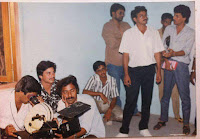 The scenes of the protagonist's college life were filmed at Keyes High school, near Secunderabad Junction railway station. A school wall was demolished and a gate was repaired for the film's opening scene.
Raghuvaran was carried away during the shoot of few action sequences
and slapped Brahmaji for nearly six times in a row. To avoid such issues
in the case of murder scenes, Varma decided to complete few of them by
using plain close-ups of the victims. Sudhakar's murder scene was filmed near Keesara in Ranga Reddy district.Gopala Reddy and Ellore placed a camera in a bag and ran behind him for a shaky effect.
In the cycle-chain scene in which Siva uses a cycle chain to fight with
J. D., the hand pulling the chain was Ellore's; in the next shot,
Nagarjuna is shown holding the chain.
The scene in which Naresh is killed near his home was filmed in the
streets of Vengala Rao Nagar. The cycle chase scenes were filmed in Somajiguda and the slums behind Yashoda Hospitals. The bus chase scene was shot in Yusufguda. The film's climax was filmed at the Swapnalok complex in Secunderabad, and Bhavani's suicide was filmed on a set at Venus Studios in Chennai. The scenes of the protagonist's college life were filmed at Keyes High school, near Secunderabad Junction railway station. A school wall was demolished and a gate was repaired for the film's opening scene.
Raghuvaran was carried away during the shoot of few action sequences
and slapped Brahmaji for nearly six times in a row. To avoid such issues
in the case of murder scenes, Varma decided to complete few of them by
using plain close-ups of the victims. Sudhakar's murder scene was filmed near Keesara in Ranga Reddy district.Gopala Reddy and Ellore placed a camera in a bag and ran behind him for a shaky effect.
In the cycle-chain scene in which Siva uses a cycle chain to fight with
J. D., the hand pulling the chain was Ellore's; in the next shot,
Nagarjuna is shown holding the chain.
The scene in which Naresh is killed near his home was filmed in the
streets of Vengala Rao Nagar. The cycle chase scenes were filmed in Somajiguda and the slums behind Yashoda Hospitals. The bus chase scene was shot in Yusufguda. The film's climax was filmed at the Swapnalok complex in Secunderabad, and Bhavani's suicide was filmed on a set at Venus Studios in Chennai.Several romantic scenes with Nagarjuna and Amala were initially filmed at Ushakiron Movies in Secunderabad. Dissatisfied with the results, Varma reshot them at the Osman Ali House.Mugur Sundar choreographed the songs, and "Anando Brahma" was filmed at the Borra Caves in Vishakhapatnam. The film crew had to crawl into the caves, making Siva the first Telugu film shot in its interiors. The remaining songs were filmed on sets at Annapurna Studios. Srinivasa Rao filmed his scenes in one day. The fights, choreographed by Varma, featured hand-to-hand combat and attacks with hooks as he was trained in kickboxing. |
|
| ⏩➤Music : The five-song soundtrack album and background score of Siva were composed by Ilaiyaraaja, with Veturi Sundararama Murthy writing the lyrics of "Anando Brahma", "Enniyallo", and "Kiss Me Hello". Sirivennela Sitaramasastri wrote the lyrics for the remaining two songs: "Botany" and "Sarasalu". S. P. Balasubrahmanyam, S. Janaki, K. S. Chithra, and Mano were the singers. Due to a strike in Madras, Ilaiyaraaja and Varma completed the background score in Mumbai. The producers suggested Varma to use stock tunes instead for the score. Nagarjuna noticed this and asked them to provide what Varma asked for, and offered to pay the additional expenses incurred if any. For an action scene, Ilaiyaraaja used moving string music; when Varma asked why, he answered: "They have come here to study and they are fighting. So I just felt sad for them". Varma was impressed with Deepan Chatterjee's work in Sindhoora Puvvu (1988) and recruited him as Siva's sound designer. Ismail Darbar, who later composed the music for Hum Dil De Chuke Sanam (1999) and Devdas (2002), worked with Ilaiyaraaja on Siva as a violinist. The soundtrack was successful, and Chatterjee's sound design was critically acclaimed. Varma dedicated the background score of his Rowdy (2014), composed by Sai Karthik, to Ilaiyaraaja. Adapting the background score of the cycle-chase scene in Rowdy, Varma said that his main interest was "to bring back this composition to express the great idea of the genius [Ilaiyaraaja's] 1989 soundtrack (of Siva) to 2014". 👓Siva All Songs Free Download Link Siva All Songs ⏩➤Box Office : 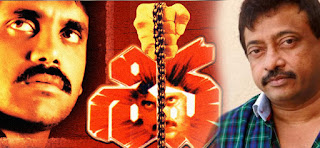 Siva was produced on a budget of ₹7.5 million. Venkat and Surendra retained the distribution rights for Nizam, Vishakhapatnam and the East and West Godavari regions. Released on 5 October 1989, it was critically acclaimed, with major praise directed towards its usage of technology and sound design.
The distributors were concerned about the film's violence, saying that
it would alienate women and families (whom the film industry believed
were the majority of the audience). Although Venkat and Surendra expected that the film would have average earnings, Siva was a commercial success and earned ₹10 million in the Nizam region alone (a first in Telugu cinema). In addition to ₹50,000, Varma received five percent of Siva's profits. The film had a 100-day run in 22 centres and a 175-day run in five centres.It was screened in the mainstream section of the International Film Festival of India, held on 19 January 1990 at the Empire Theatre in Kolkata. For the April 2013 centennial of Indian cinema CNN-News18 included Siva
on its list of 100 greatest Indian films of all time, calling it a
"completely new take on student politics and the ideologies driving it"
and saying that the film's ideas "found a reflection in many university
elections during a later stage". Siva was produced on a budget of ₹7.5 million. Venkat and Surendra retained the distribution rights for Nizam, Vishakhapatnam and the East and West Godavari regions. Released on 5 October 1989, it was critically acclaimed, with major praise directed towards its usage of technology and sound design.
The distributors were concerned about the film's violence, saying that
it would alienate women and families (whom the film industry believed
were the majority of the audience). Although Venkat and Surendra expected that the film would have average earnings, Siva was a commercial success and earned ₹10 million in the Nizam region alone (a first in Telugu cinema). In addition to ₹50,000, Varma received five percent of Siva's profits. The film had a 100-day run in 22 centres and a 175-day run in five centres.It was screened in the mainstream section of the International Film Festival of India, held on 19 January 1990 at the Empire Theatre in Kolkata. For the April 2013 centennial of Indian cinema CNN-News18 included Siva
on its list of 100 greatest Indian films of all time, calling it a
"completely new take on student politics and the ideologies driving it"
and saying that the film's ideas "found a reflection in many university
elections during a later stage".The Tamil remake rights to Siva were initially sold for ₹100,000. After the film's release, Venkat and Surendra dubbed it into Tamil as Udhayam and sold its distribution rights for ₹8.5 million.Released on 12 January 1990 in 24 centres, Udhayam was commercially successful and earned more than ₹20 million. Akkineni Nageswara Rao advised Varma to place an advertisement thanking the audience for the film's success. Varma opposed it, believing that a film's success should be credited to the production team and its failure attributed to the director. When Varma's second film, Kshana Kshanam (1991) under-performed at the box office, Siva's success was considered accidental. In addition to the Filmfare Award for Best Film – Telugu, Siva won three Nandi Awards: Best Director (Varma), Best First Film of a Director, and Best Dialogue Writer (Bharani) |
|
| ⏩➤Influence On Film Personalities : 👉 Siva, which attained cult status in Telugu cinema, is one of the first Telugu films produced after the migration of Telugu film industry from Madras to Hyderabad to feature characters speaking the Telangana dialect. The film made Nagarjuna a superstar in Telugu cinema; it changed his career, and earned him a reputation for encouraging new directors. Nagarjuna considered Siva a milestone in his personal life as well since he and Amala, who were in a relationship during the film's shoot, decided to marry after its completion. 👉According to filmmaker V. V. Vinayak and writer Pulagam Chinnarayana, Siva divided Telugu cinema into two eras: before and after the film. With Siva, Varma was credited with the introduction of steadicams and new sound recording techniques in Telugu films. Within a year of the film's release, more than ten steadicams were imported into India. Siva attracted the young audience during its theatrical run, and its success encouraged filmmakers to explore a variety of themes and make experimental Telugu films. 👉Bharani broke through as an actor and dialogue writer with the film. Chakravarthy, Jithendra and Ramjagan achieved success with Siva, and the former two adapted J. D. and Chinna as screen names. Kannada actor and filmmaker Upendra reworked the narrative of Om (1995) when he found the previous version similar to Siva. 👉Telugu filmmaker S. S. Rajamouli understood the importance of heightening tension in action sequences, and the impact created by proper use of sound after watching Siva. Sreenu Vaitla, Sudheer Varma, and Praveen Sri were inspired by Siva to pursue careers as directors; Sri assisted Ram Gopal Varma before he made his directorial debut with Gaayam 2 (2010). Music director Munna Kasi was inspired by Ilaiyaraaja's work in Siva, and wanted to work with Varma after he graduated. On the rise of antisocial-element-based scripts in Tamil cinema, trade analyst Sreedhar Pillai said in May 2002 that Siva's Tamil-dubbed version (Udhayam) was the "forerunner" of city-based crime films. 👉Tamil actor Ganesh Venkatraman was "mesmerised" as a child by Siva, admiring Nagarjuna and carrying a cycle chain in his schoolbag. About the impact of Baahubali: The Beginning (2015) on Indian cinema, Rana Daggubati said that regional films can gain national acceptance for their content and cited the success of Siva and Roja (1992) as examples. 👉 In March 2016, Karthi said that he admired Nagarjuna after seeing Siva and Idhayathai Thirudathe (1989) and found working with him in Oopiri (2016) "a great chance to know him." |
|
👉 I still recall Varma okaying my first shot, though I forgot to utter
my line. He was of the opinion that I conveyed what I needed to, through
a gesture. Post the shot, he came to me and said that it’s better I
forget putting pen to paper, only for me to realise later that I would
become a busy actor.
—Bharani during the film's silver jubilee |
|
👉 RGV's ingenuity lies in his understanding of human nature and I got a
first-hand experience while filming the scene where I betray Gollapudi
Maruthi Rao. Before shooting that scene, RGV told me that I should feel
guilty for betraying my boss because every person, however cruel might
be, has a humane side. So, all I did was gulp and RGV was impressed with
my expression.
👉 Siva explores the exploitation of students by anti-social elements against a mafia backdrop and the impact on them of crowd psychology. It also focuses on politics and betrayal in the scene where Bhavani murders Machiraju and his enemy Viswanadham. As a student, Varma observed and participated in gang wars and student politics besides analysing the impact of a gangster's lifestyle and body language on students. Those experiences inspired him to begin writing Siva. Most of the characters, including Bhavani, were inspired by real life. Bhavani was based on Radha, an actual crime boss with a reputation for violence in Vijayawada; Bhavani, like Radha, is also a woman's name. Siva's character was comparatively fictitious whom Varma considered an "ideal person" making the society "too dramatic". Siva was partially based on Varma's friend, Golla Ravi, who lived in Punjagutta. Assistant director Krishna Vamsi found the film's story similar to Rahul Rawail's Arjun (1985). Varma said that Arjun was an inspiration for Siva, since Sunny Deol's title character in Arjun was a hero who "does not bend to forces larger than himself". Apart from Arjun, Varma was also inspired by Govind Nihalani's Ardh Satya (1983) and Dilip Shanker's Kaal Chakra (1988). The basic plot of Bruce Lee's Way of the Dragon (1972) was adapted by Varma for Siva. In Way of the Dragon, Lee comes from Hong Kong to work in a Chinese restaurant in Rome and fights local gangsters who try to intimidate the owners; this leads to a rivalry with a crime boss (played by Chuck Norris). In Siva, Nagarjuna comes from a nearby town to Vijayawada to further his education, fights gangsters and develops a rivalry with Raghuvaran. While Lee and Norris fight at the Colosseum at the climax of Way of the Dragon, Nagarjuna and Raghuvaran duel on a building terrace in Siva. In addition to Way of the Dragon, Varma adapted scenes from a number of other films. Malli's mother slapping a police inspector for failing to save him was inspired by Steven Spielberg’s Jaws (1975), and the cycle chase scene was based on a similar scene in Arjun. A scene in which goons demand donations to build a temple for Ganesha was from Kaal Chakra. Although Varma wanted to film a fight between Nagarjuna and Chakravarthy during a football match (based on a similar scene in 1978's Damien: Omen II), Venkat was indifferent to the idea. ⏩➤Shiva Made Its Silver jubilee Function. On This Occasion SiraaSri Made A Documentry Named "Exploring Shiva" After 25 Years. ⏩➤ DOCUMENTRY : 👉'Shiva', One of Telugu Cinema's all time classics, released on October 5th, 1989. On the occasion of completing 25 Years, A special documentary on the landmark film has been unveiled and its something never happened in Tollywood before. 👉No one would deny the fact that 'Shiva' changed the life's of many people including Nagarjuna-Amala, Ram Gopal Varma, actors and technicians who have been part of it. Several Assistant Director who worked for 'Shiva' have become very successful as directors over the years. It is one film which inspired an entire generation and made them part of cinema in one way or the other. 👉The documentary 'Exploring Shiva Movie After 25 Years' covers fantastic scene composition in Shiva, Interviews of people who worked for it and those who got inspired by it and the terrific background score composed by Maestro Ilayaraja. 👉SHIVA is a very special film and will remain so forever in TFI. Shiva To Vangaveeti |
